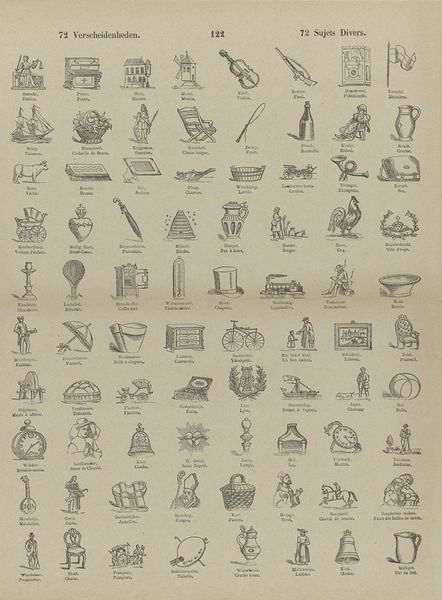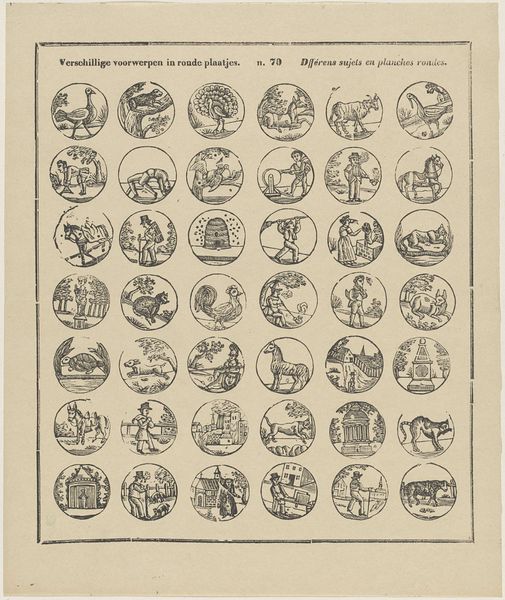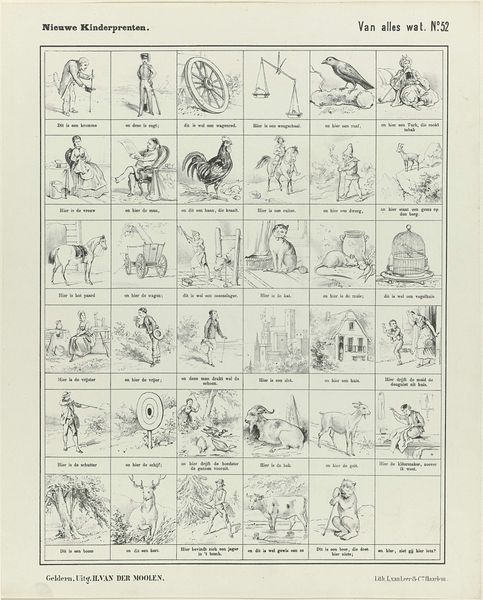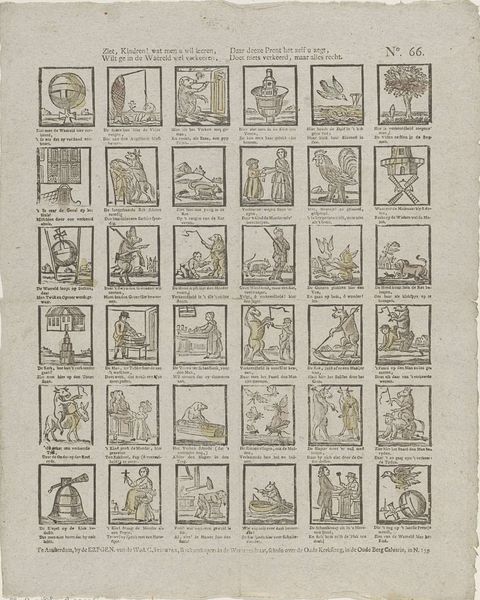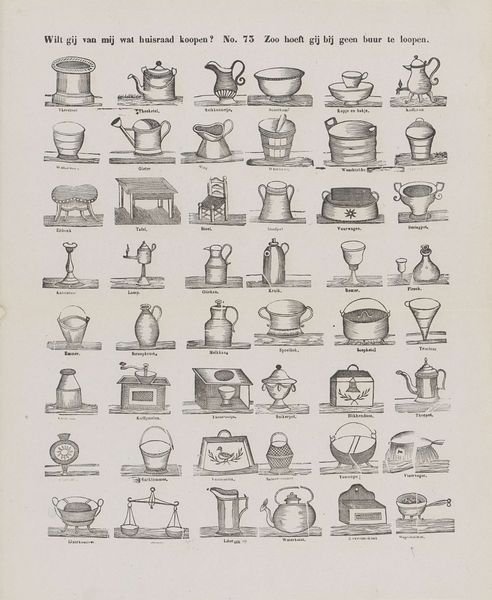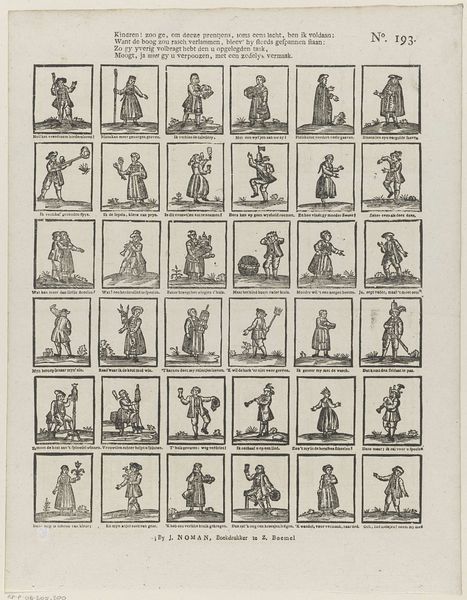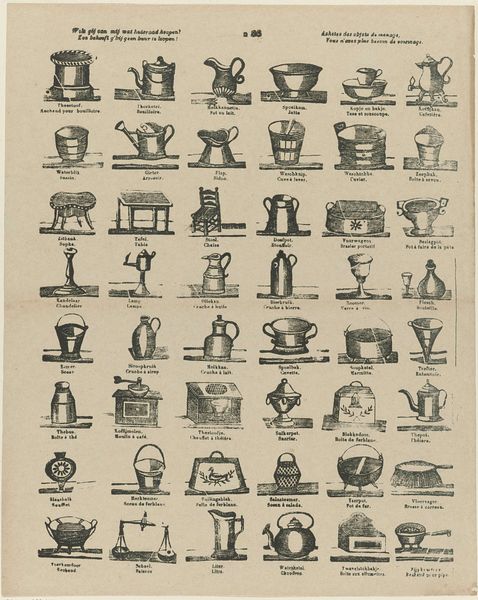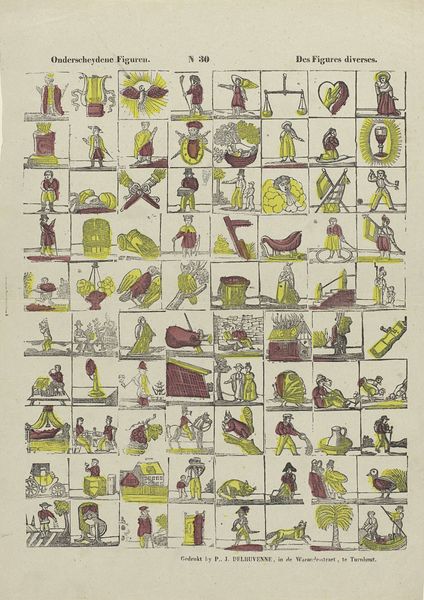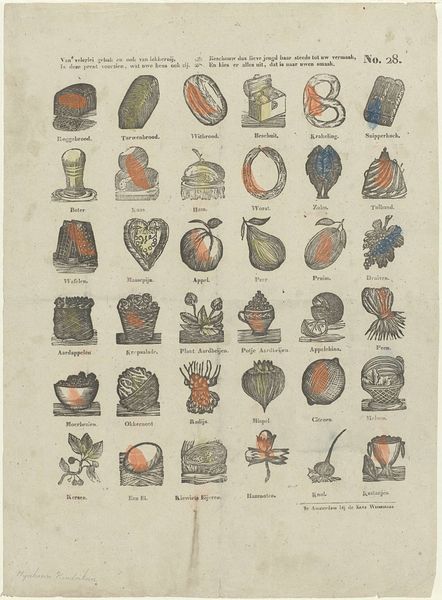![Men heeft o lieve jeugd! op deeze kinderprent, / Voor u een groot getal van plaatjes laten malen [(...)] by Erve Wijsmuller](/_next/image?url=https%3A%2F%2Fd2w8kbdekdi1gv.cloudfront.net%2FeyJidWNrZXQiOiAiYXJ0ZXJhLWltYWdlcy1idWNrZXQiLCAia2V5IjogImFydHdvcmtzLzJjMzVkNzhkLWY4YWQtNGFiYy04MTA1LTkwMjg0NjliZmM2MS8yYzM1ZDc4ZC1mOGFkLTRhYmMtODEwNS05MDI4NDY5YmZjNjFfZnVsbC5qcGciLCAiZWRpdHMiOiB7InJlc2l6ZSI6IHsid2lkdGgiOiAxOTIwLCAiaGVpZ2h0IjogMTkyMCwgImZpdCI6ICJpbnNpZGUifX19&w=3840&q=75)
Men heeft o lieve jeugd! op deeze kinderprent, / Voor u een groot getal van plaatjes laten malen [(...)] 1828 - 1913
0:00
0:00
graphic-art, print, paper, ink, engraving
#
graphic-art
#
narrative-art
# print
#
paper
#
ink
#
genre-painting
#
engraving
#
miniature
Dimensions: height 413 mm, width 342 mm
Copyright: Rijks Museum: Open Domain
Curator: This print, titled "Men heeft o lieve jeugd! op deeze kinderprent...", attributed to Erve Wijsmuller and dating from 1828 to 1913, presents a fascinating visual array rendered in ink on paper using engraving techniques. Editor: It’s like a visual encyclopedia of small scenes! I’m immediately struck by the density of images within those circular frames. How would you approach analyzing such a work from a formalist perspective? Curator: Indeed. Our primary focus would be the internal relationships between the elements. The organization into a grid-like structure presents an immediate point of investigation. How does the regularity of the circular vignettes contrast with the varying content within each? Is there a discernible rhythm or pattern established by the arrangement? Consider the use of line, for example. Notice the consistency in line weight across the various scenes, creating a visual harmony despite the diversity of subjects. Editor: So, you're saying that the consistent style is key, even if the images themselves seem random? Curator: Precisely. It’s about the formal relationships creating a unified whole. The engravings display remarkable consistency in the application of technique, yet vary dramatically in subject matter and symbolic intent. Can we truly decode allusions without broader knowledge? Not entirely, yet formal elements remain dominant considerations, creating both harmony and dissonance within the complete composition. Note how the use of positive and negative space within each circle affects our perception. Editor: So, it’s the tension between the overall design and individual pictures that creates meaning? Curator: In part. Focus also on texture achieved through varied engraving. This is also the creator showing ingenuity. Editor: Fascinating. It is about more than identifying objects and deciphering hidden clues and is instead is appreciating it purely as an artwork of balanced forms and textures. Curator: Exactly. A formalist analysis pushes us beyond narrative, encouraging an appreciation of pure form and execution.
Comments
No comments
Be the first to comment and join the conversation on the ultimate creative platform.
